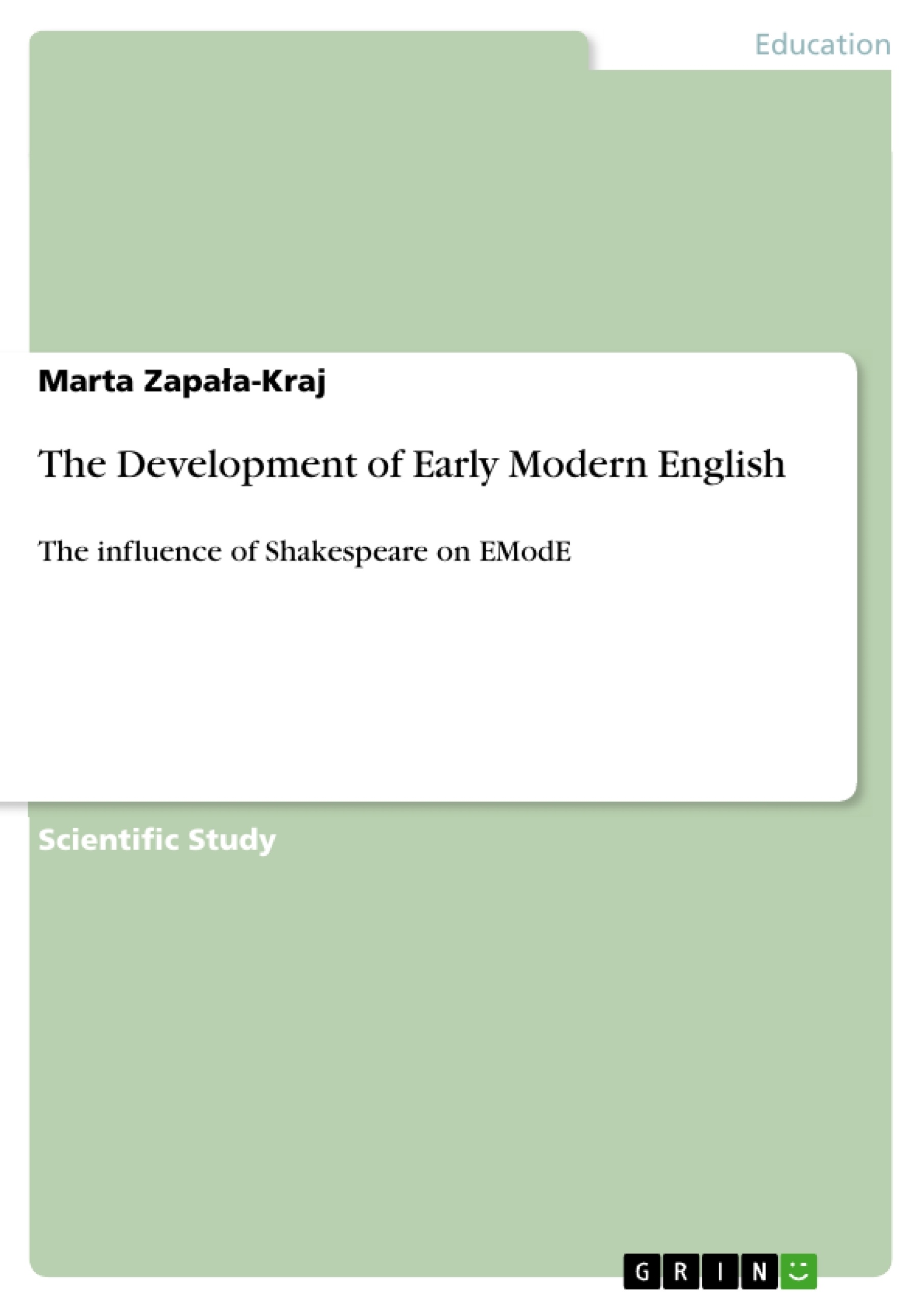In the development of languages particular events often have recognizable and at times far-reaching effects. The Norman Conquest and the Black Death are typical instances that shaped the Middle English.
In the Modern English period, the beginning of which is conveniently placed at 1500, numerous new conditions began to play an important role, conditions that previously either had not existed at all or were present in only a limited way, and they caused English to develop along somewhat different lines from those that had characterized its history in the Middle Ages. The new factors were the printing press, the rapid spread of popular education, the increased communication and means of communication, the growth of specialized knowledge, and the emergence of various forms of self-consciousness about language.
Above everything, however, there is the factor which should be referred to as self-consciousness about language. This had two aspects, one individual, one public. At the individual level one may observe a phenomenon that has become intensely important in modern times: as people lift themselves into a different economic or intellectual or social level, they were likely to make an effort to adopt the standards of grammar and pronunciation of the people with whom they have identified, just as they tried to conform to fashions and tastes in dress and amusements.
However superficial such conformity might be, people were as careful of their speech as of their manners. Awareness that there were standards of language was a part of their social consciousness. Most people were less aware that such standards were largely accidental rather than absolute, having developed through the historical contingencies of economics, culture, and class.
The following paper has been written with the purpose of presenting the reader aspects of the fascinating phenomenon which the Early Modern English is.
The paper will provide the reader with all the substantial facts connected with the topic of the paper such as the Great Vowel Shift, the linguistic innovations of Shakespeare, sources of various words in English and much more.
Table of Contents
- Chapter One: Historical Background of Early Modern English
Objectives and Key Themes
The main objective of this work is to present a comprehensive overview of Early Modern English (EME), tracing its evolution from 1476 to the early 18th century. It aims to explore the diverse factors influencing this development, encompassing external influences and internal linguistic changes.
- The historical context of EME's development.
- External factors influencing the evolution of EME (e.g., the printing press, social changes).
- The linguistic innovations of William Shakespeare.
- Internal changes within the English language during the EME period (e.g., The Great Vowel Shift).
- The impact of social and political events on the English language.
Chapter Summaries
Chapter One: Historical Background of Early Modern English: This chapter lays the groundwork for understanding the complexities of Early Modern English. It emphasizes the interconnected nature of linguistic elements, highlighting how any given change is the product of various interacting levels of language and the sociohistorical context. The chapter posits that language is a crucial tool for communication and self-expression, shaping individual and societal identities. It argues that language is both shaped by and a shaper of society, demonstrating its fundamental role in human culture and development. Examples provided include the difficulties in pronouncing sounds of unfamiliar foreign languages, emphasizing the importance of shared linguistic rules for communication. The chapter also touches upon the vast global reach of English today and its many variations, while noting the ongoing evolution of the language.
Keywords
Early Modern English, language evolution, historical linguistics, sociolinguistics, William Shakespeare, The Great Vowel Shift, linguistic change, social factors, political factors, language standardization.
Frequently Asked Questions: A Comprehensive Language Preview of Early Modern English
What is the main objective of this work?
The main objective is to provide a thorough overview of Early Modern English (EME) from 1476 to the early 18th century, examining the various internal and external factors that shaped its development.
What key themes are explored in this preview?
Key themes include the historical context of EME's development, external influences like the printing press and social changes, linguistic innovations of William Shakespeare, internal changes such as The Great Vowel Shift, and the impact of social and political events on the English language.
What is covered in Chapter One: Historical Background of Early Modern English?
Chapter One establishes the foundation for understanding EME's complexities. It emphasizes the interconnectedness of linguistic elements, highlighting how changes result from interactions between different language levels and sociohistorical context. It explores language as a tool for communication and identity formation, showing its role in shaping and being shaped by society. The chapter also touches upon the global reach of English and its ongoing evolution.
What are the key words associated with this work?
Key words include Early Modern English, language evolution, historical linguistics, sociolinguistics, William Shakespeare, The Great Vowel Shift, linguistic change, social factors, political factors, and language standardization.
What types of information are included in this language preview?
This preview offers a comprehensive overview including the title, table of contents, objectives and key themes, chapter summaries, and keywords.
What is the time period covered by this study of Early Modern English?
The study covers the period from 1476 to the early 18th century.
- Quote paper
- MA Marta Zapała-Kraj (Author), 2009, The Development of Early Modern English, Munich, GRIN Verlag, https://www.grin.com/document/161311



